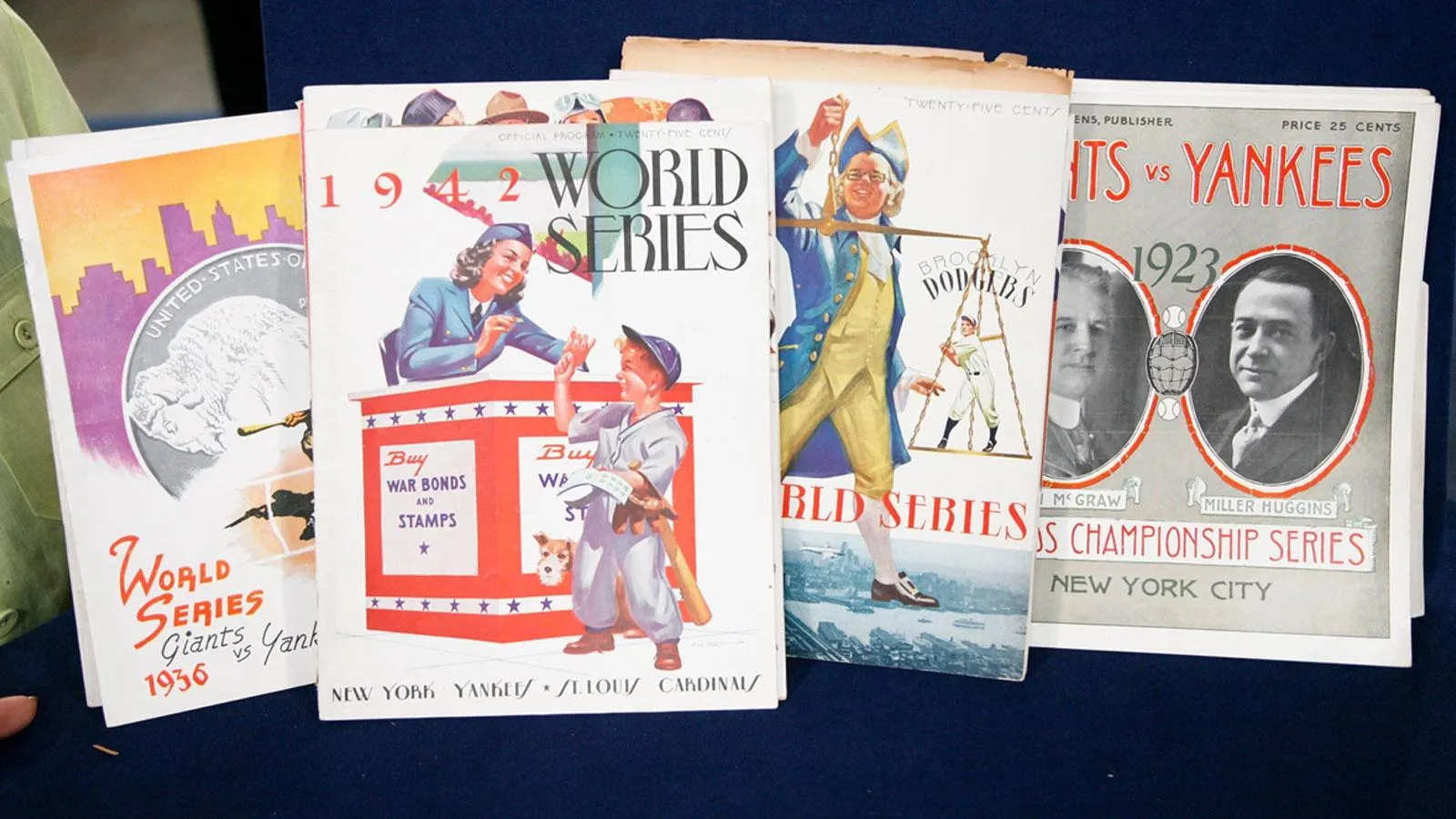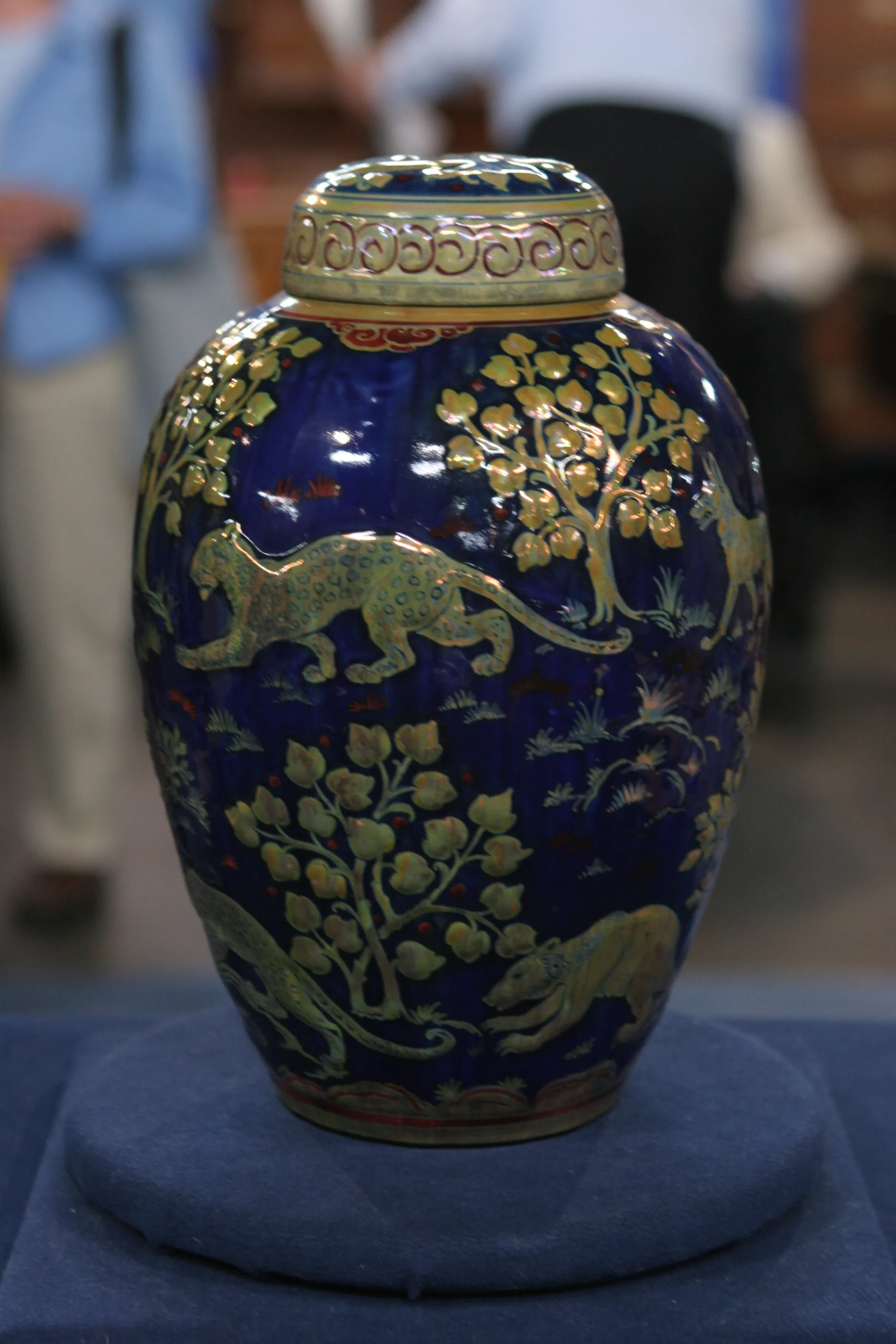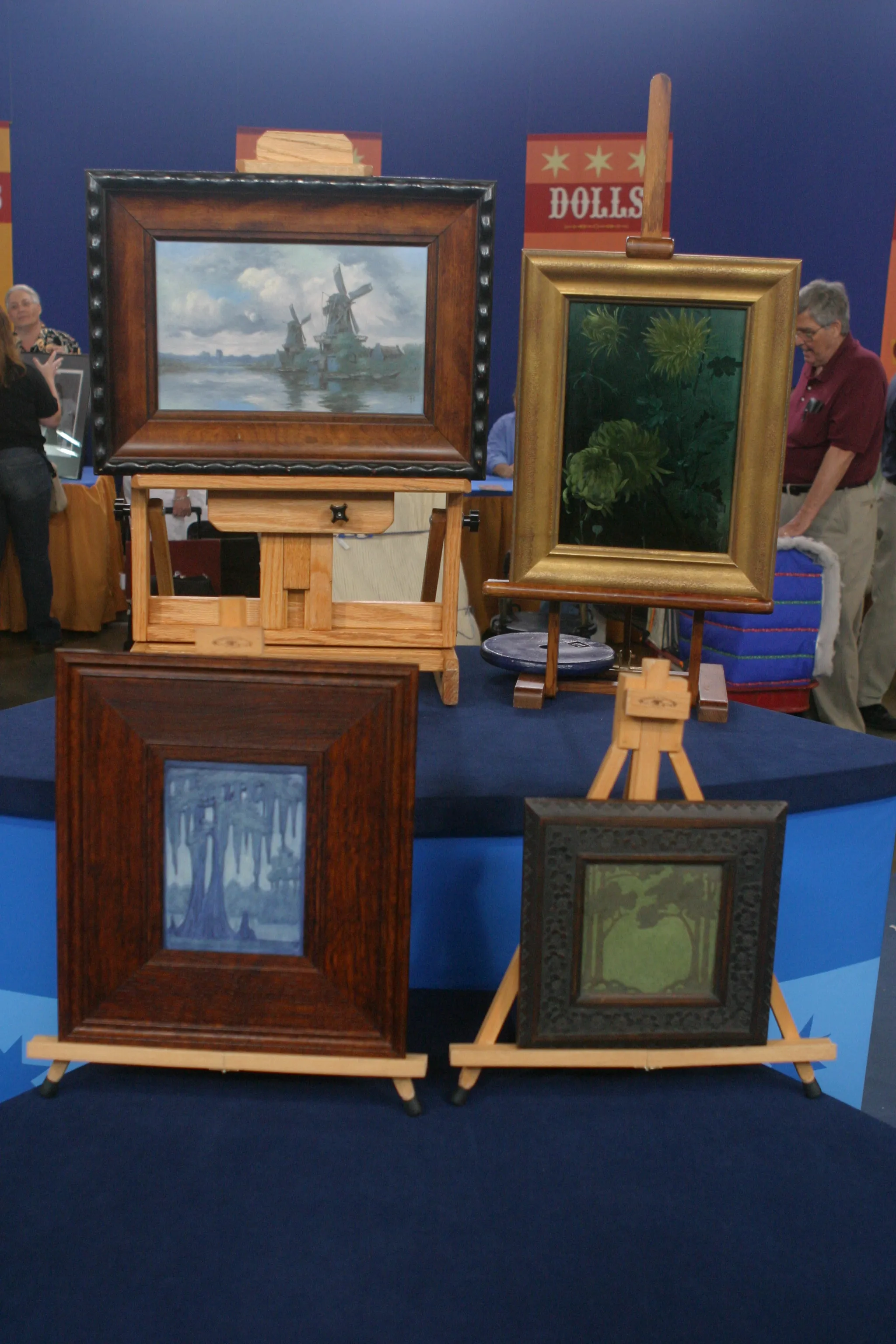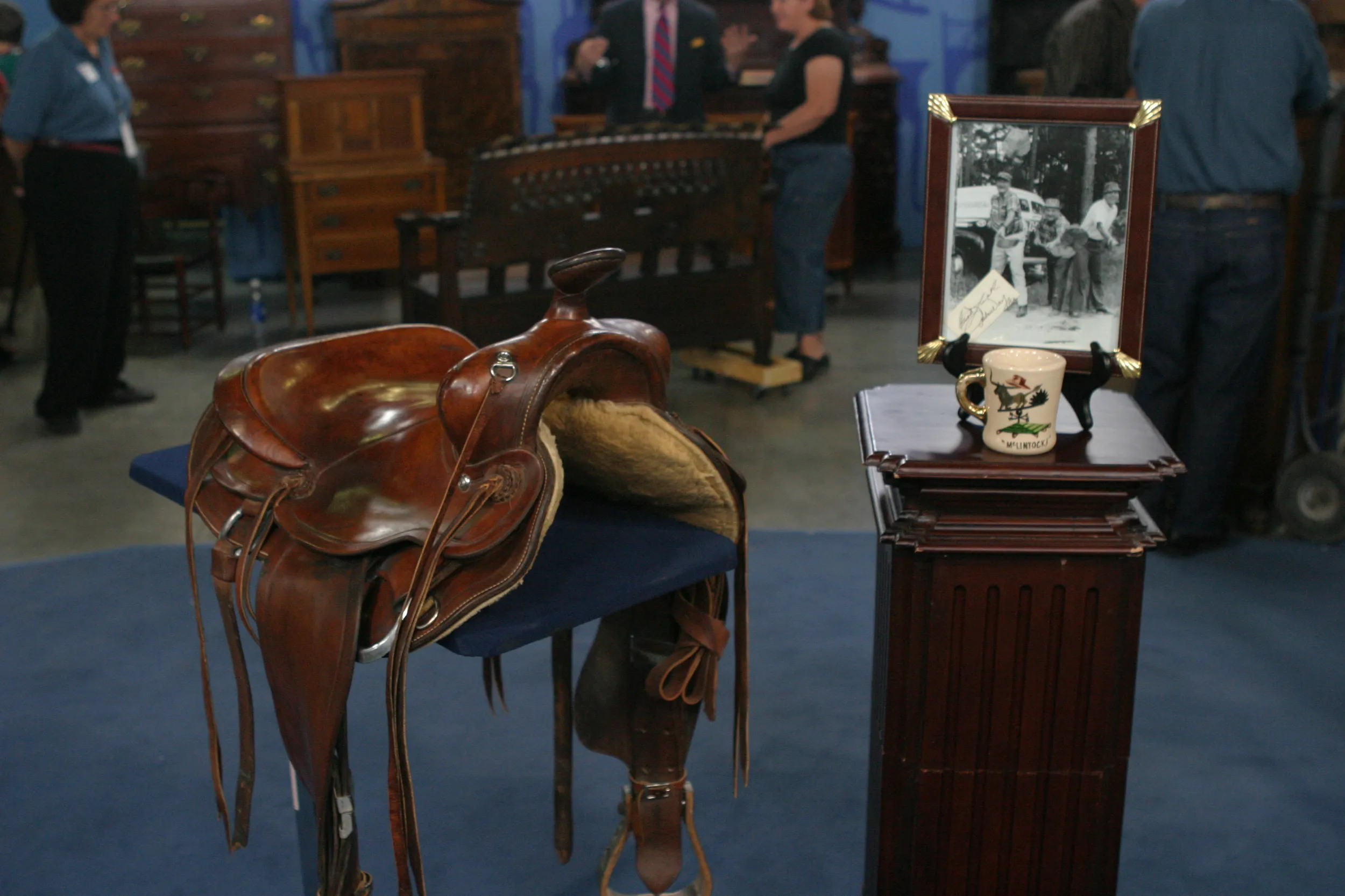GUEST: My father bought these in Hong Kong in 1947. He was stationed at Clark Field in Manila, took the boat over whenever he could. He was an avid collector of Oriental art, and he also had his clothes tailored there, his uniforms. And one day, his tailor told him about a guy who had some stuff to see. So my father went to see him, and he fell in love with them, and he bought them. And we came back to the States in 1950.
APPRAISER: And what did he tell you that these were?
GUEST: They're the four seasons of planting rice. The way I understood it, they're teak frames.
APPRAISER: In Chinese art, you'd often get the four seasons. Flowers of the four seasons. These are unusual because the subject matter. It's unusual to have something that shows the cycle of the planting of rice. And it starts, from what I can see, right here at the back, where they're plowing the field. And here they're sowing, putting the seeds in. And then here is where they're harvesting. And then finally, there they are, knocking the grain from the stalks.
GUEST: Mm-hmm.
APPRAISER: So that, that's the sequence.
GUEST: Okay.
APPRAISER: The other thing that's interesting is, obviously these are in relief, high relief, because most painted porcelain panels are not. So in order to determine the age, there are several things that we go by that are clues. One of which is this pink color. Because enamel-decorated pink colors did not exist until the early 18th century.
GUEST: Okay.
APPRAISER: Now, one of the other clues that we have is the design here at the top. This is called iron red, and it has stylized dragons, which are drawn from archaic bronze motifs, Chinese ancient bronzes. You'll notice that it's sort of uneven. This kind of depiction one finds in the late 18th century, early 19th century. But I don't think you're going to find it with that kind of uneven quality. It's going to be a lot clearer, crisper, without the unevenness that you see here.
GUEST: Okay.
APPRAISER: So I think that we're looking at something that dates probably to the early years of the 20th century.
GUEST: Okay.
APPRAISER: During the early years of the 20th century, there was a lot of turbulence in China, because the Qing Dynasty fell in 1911. The craftsmen who were producing things for the Qing court didn't just disappear. They continued to make things in Jingdezhen. And so I think that these probably date to the 1920s. The wood is actually not teak. It's a wood called hongmu.
GUEST: Okay.
APPRAISER: Which people mistake for teak. But one of the other recent changes in the Chinese art market is, the Chinese have developed a very robust economy. And guess what they want to collect.
GUEST: Their old stuff.
APPRAISER: Their old stuff.
GUEST: (laughing)
APPRAISER: And there's not a lot of that around. So they're starting to collect things in the 20th century, and they're starting to focus on things made during the 1920s and '30s that are just like this.
GUEST: Okay.
APPRAISER: And I can tell you that 15 years ago, these were not worth very much money.
GUEST: Okay.
APPRAISER: But at auction, how about $40,000 to $60,000? (chuckling)
GUEST: (voice breaking) Okay. (laughs) (exhales) Take my breath away. (laughs) I never would have dreamed. Never ever. I thought maybe $3,000 or $4,000. Okay, wonderful. Thank you so much.
APPRAISER: You're very welcome.
GUEST: My father will be... He would be so, so pleased. (exhales) (chuckles)











